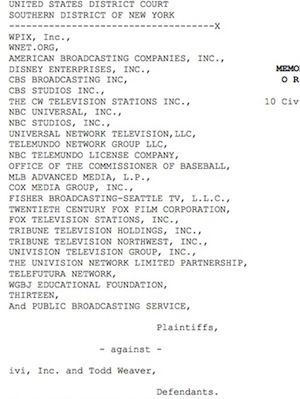At last week’s CEA Line Show, I was reminded again about that other industry that uses wireless and cable transmission to distribute content onto a flat LCD screen.
Admittedly, some of my television watching has been replaced by web browsing and the focus of this blog has been on apps and Internet, rather than TV channels and set-top boxes, but I was still stunned by ESPN’s 3D sports channel.
In other words, there’s still much to get excited about in the non-interactive, non-social TV medium.
This became clearer when I met briefly last week with industry pioneer and disruptive force Jack Perry, whose company Syncbak has worked out a clever solution that would let local TV stations monetize their live transmissions on the Web.
As with most things involving communications, this story about retransmitted broadcast signals includes well-intentioned but conflicting public policy, litigious players, and the Internet making everything more complicated and the stakes higher.
Around the time that cell phones was a glimmer in the eyes of a few researchers, circa 1970s, cable operators were just getting started.
It was a simpler time: cable programming involved merely piping in broadcasters over-the-air signals.
For free. No payment made from a cable company to a TV station for copyright usage.
In fact, there weren’t really relevant copyright rules regarding retransmission, at least according to the aging Copyright Act and a few Supreme Court rulings at the time.

Courts don’t like it if you treat the Internet like a localized cable viewing area.
In 1976 Congress stepped in with its Section 111 modification to the Copyright Act. To nurture the then embryonic cable industry, 111 let operators avoid expensive negotiations with many separate TV networks, allowing them instead to make a single royalty payment directly to the US Copyright Office based on a percentage of gross revenues.
These government granted licenses favoring the cable operators were balanced by an earlier must-carry retransmission rule added in 1972 to the Communications Act and forcing cable companies to carry the signals of local television stations.
The key policy idea in play is localism: Congress encouraging the growth of cable companies, which at the time were teeny regional players, while also keeping local TV broadcasters afloat with must-carry rules.
You know how this story ends. As cable grew to be a national presence with its own programming, these earlier policy ideals set up inevitable confrontations over appropriate payments from cable to broadcasters (read Cablevision’s blackout of Fox’s World Series coverage) and the must-carry rules even leading to free speech court cases (Time Warner vs. FCC, 1997 ).
Enter satellite TV and serial entrepreneur Jack Perry.
While CEO at Decisionmark starting in the 1990s, Perry cut his teeth working out the technology that allowed satellite carriers to retransmit local TV signals into subscribers homes within a given broadcasting area, while also protecting TV network affiliates exclusivity rights. Hold this thought.
Nowadays local TV stations and network affiliates would love to get their signals retransmitted over the Internet.
But there are wrong, as in illegal, ways to do this.
ivi, an Internet TV startup, took on the job of streaming video from TV stations and making them available on browsers. Relying on a section 111 license and claiming that they were, ahem, like a cable company, ivi was greeted with a suit from from a few aggrieved parties, with names that included WPIX, CBS, NBC, FOX, Thirteen, Public Broadcasting Service, and Disney.
These stakeholders were a little miffed that ivi was beaming content everywhere under a bargain basement license meant for struggling cable companies in 1970s. The judge granted a preliminary injunction this past February.
Back to Jack. His latest venture, Syncbak, exploits a simple idea that is similar in spirit to the work done at Decisionmark. A piece of hardware attached to a subscriber’s set-top box, called a SyncLink, easily learns which stations the viewer is entitled to and generates an authenticating token.
Syncbak then manages the digital rights in the cloud, connecting up an app that runs on say an iPad or Android gadget with the subscribers permissions, and forwarding the appropriate streams.
Perry described it to me as cable over the air, and with more granular information about subscribers now available, Syncbak should provide new Web revenues for broadcasters while enforcing exclusivity in geographic regions.
Kind of a rebirth of localism on a medium known for not having any boundaries.
Syncbak is currently in tests at 11 stations.
Related articles
- Brief Interlude at CE Week, NYC (technoverseblog.com)
- Syncbak
- Federal Court Says No to Internet Retransmission (broadbandlawadvisor.com)
- Broadcasters, distributors debate retransmission consent rules at FCC (latimesblogs.latimes.com)
- WPIX, et. al. versus IVI (justia.com)


